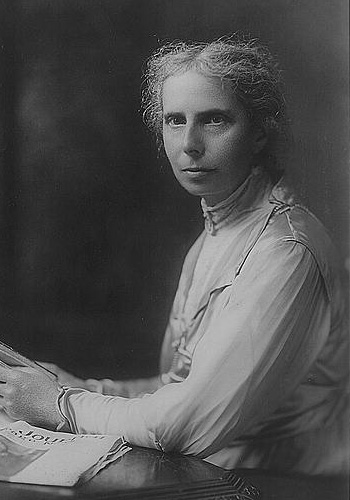During the fight for women’s suffrage, Black female suffragists faced discrimination by white women in the movement, including some in leadership positions who sought to appease southern white female suffragists. The 1913 women’s suffrage parade in Washington, DC, provided such an example. However, African American women remained determined to march.
Journalist and suffragist Ida B. Wells made headlines for refusing to remain in the segregated section at the back of the parade. Instead, she marched up front with other members of the Illinois delegation. A delegation made up of sorority sisters of the Delta Sigma Theta Sorority of Howard University marched as well. Nineteen of the twenty-two founders, including several of the women pictured below, participated in the parade.
Directions
Observe and reflect on the photograph of the sorority sisters of Delta Sigma Theta, many of whom marched in the 1913 suffrage parade in DC. Then answer the questions in the boxes below.
Optional: Read the two letters at the Library of Congress exchanged about segregating women at the parade by race. Keep in mind that the cofounders of the Woman’s Journal and their daughter, who became its editor, Alice Stone Blackwell, were abolitionists who gave lectures on civil rights for African Americans. So, why would Alice Paul, one of the leaders of the suffrage movement, and Alice Stone Blackwell engage in these exchanges? Does that change how you think about their accomplishments?
Nineteen of the twenty-two founders of the Delta Sigma Theta Sorority at Howard University. Permission has been granted for educational purposes only, courtesy of Delta Sigma Theta Sorority.
Questions
Annotate this Image
Directions: Locate (bottom of page, second column from the right) and read the article in the Dallas Express, “Wilberforce Will Entertain Annual Meet of Sorority,” using the magnifier to help you. Then use the annotation tool to take notes on the following questions:
- What aspect of the Delta Sigma Theta Sorority does the writer find to be “incredible”?
- What is the tone of the article?
- What are the other headlines on the page?
- Read one of the other articles on the page. Find a similar theme between the article you just read and the article on the Delta Sigma Theta Sorority.
- On the previous primary source page, the article from Woman’s Journal reported on some of the “disgraceful scenes” (white) women experienced at the start of the parade. No commentary was made about African American women having to march at the back of the parade. Why do you think this was the case?
Download the notes to share with your class.
Source: Source: The Dallas Express. Dec. 25, 1920. Library of Congress
Use the toggle button above to switch to Magnify Mode. Magnify mode will help you see finer detail in the image.
Switch back to Annotate Mode to create your annotations with click and drag.

Your Annotations







